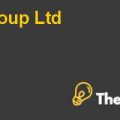
H. J. Heinz M & A Case Solution
Introduction:
The company was facing losses and hence Nelson Peltz demanded to sell the business, as he was 5.4% stake owner in the company or at least to sell some core assets so the company can buy back its stocks. The company decided restructuring by closing its major revenue factories and terminating the employees that increased the company’s shares by $ 1 billion. Due to restructuring process, the performance of company was improving and potential investors were satisfied enough to invest in the company and the current management of Heinz with their high expertise, skill, and experience helped in growth of the business. Along with this, the citizens were happy that the company was not expanding globally rather providing unique products and services in the native country.
Overall Assessment: Was it fair deal for all stakeholders?
In December 2012, 3G (a private equity firm) and Berkshire Hathaway decided to acquire H. J. Heinz for $ 28 billion (i.e. $ 72.5 per share) and they both were ensured that turnaround would lead to growth of business internationally. Initially, Heinz stakeholders were dealing the 30% premium for the stand alone business at $ 56 fair value per share and 20% premium to closing price. This valuation would result in a successful deal for Heinz in terms of fair price paid for company; the buyer is Berkshire Hathaway, it is expecting an improvement in EBIT growth. As the economy was booming, many companies recorded more profits and market was recovering after 2000 market crash, but the case was opposite for Heinz; as it was facing losses and shareholders required instant changes and the pressure for Heinz was increasing, especially from Nelson Peltz; an activist investor, who holds 5.4% of ownership in Heinz.
Interests and strategies
Heinz was facing several issues in its business operations that were decreasing profitability of the company, and Nelson Peltz’ aim was only to increase the shareholder’s value by restructuring the business, which include, selling of non-core assets, terminating unproductive employees, or selling the whole business. He was a futuristic investor who owned 5.4% in Heinz Company. Along with this, Nelson demanded five board seats to improve the performance of company by getting more power in management and controlling all operations.
Nelson Peltz played major role for the acquisition by Berkshire Hathaway and 3G, as he wanted to increase the worth of shareholders either by taking measures such as restructuring or selling whole company. Therefore, Heinz took major steps of restructuring in 2006, where he terminated 27,000 employees and closed fifteen factories, which led to generation of $ 1 billion buy back of shares. Restructuring was a successful plan that improved the performance of the company and fulfilled the demands of Peltz as he secured two board seats and managed the activities in a twelve person board. Therefore, Nelson Peltz successfully initiated the turnaround, which led to future growth both nationally as well as internationally.
The internal stakeholders and external stakeholders affected the company’s operations. Internal stakeholders include; shareholders, management, and employees, while external shareholders include; competitors, and citizens. Other stakeholders include; such as independent directors who do not take part in day-to-day activities but carry influence in the company’s decision making.
The shareholders of Heinz aim to increase the value of company by generating high profitability as they are the owners of the company and their stake totally depends on profitability, as the company’s performance was decreasing, Heinz decided for major restructuring by selling the company...................










